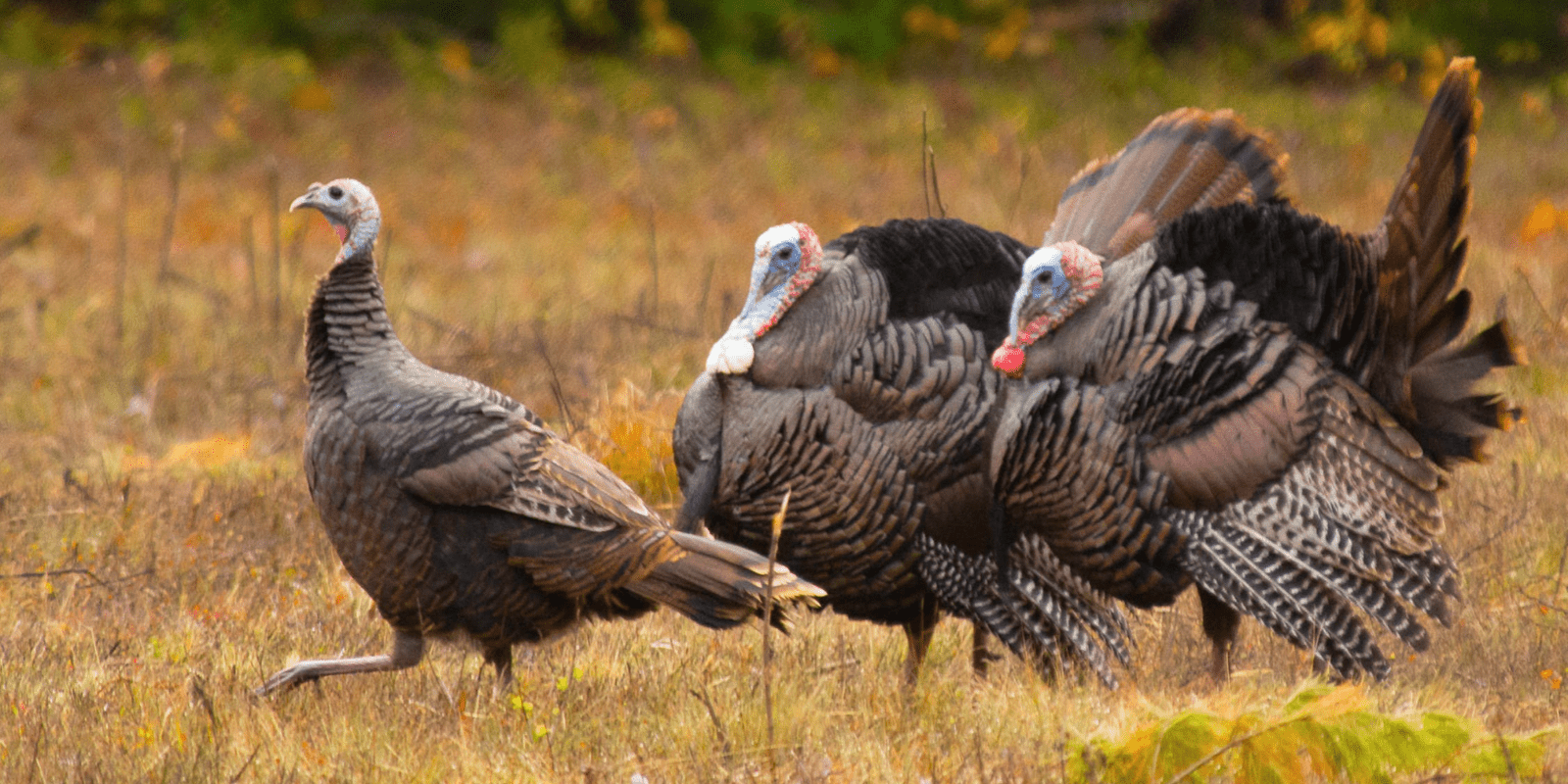We have much more to do and your continued support is needed now more than ever.
Turkeys! A Success Story That’s Nothing to Gobble At

The 2019 State of the Birds report shows nearly 30 percent of all North American birds have disappeared in the last 50 years with steep declines in every habitat. We must prioritize protecting America’s bird populations, and one species in particular shows us that conservation success is entirely possible.
Turkeys are more than just a staple of Thanksgiving. The history of turkey hunting and conservation in the United States dates back to the 1800s. The turkey’s success story highlights what it takes for conservation efforts to save a species — both time and investment.
When Europeans first arrived in North America, the wild turkey population was abundant. They became a staple food source for the settlers and were hunted all over the East Coast. By 1813, however, Connecticut’s wild turkeys were gone, and Vermont followed, with no wild turkeys by 1842.
At the turn of the 20th century, overhunting and deforestation caused wild turkey populations to plummet, and by 1920, turkeys were no longer found in 18 of the original 39 states. In the 1930s, U.S. turkey populations hit a historic low of less than 30,000, and things were not looking good for the future of America’s classic game bird.
It was not until states began to enact and enforce hunting regulations that turkey populations began to recover. Hunting license fees provided states with the funds to hire law enforcement and biological staff to manage populations of wild turkeys and other species decimated by commercial and unregulated hunting.

In 1937, the Pittman-Robertson Act brought desperately needed federal funding to states and the emerging field of wildlife management, as well. The Act placed a tax on sporting goods and ammunition and also provided seed money for large-scale conservation efforts. Yet, conservation takes time, and it took many more years for turkeys to make a substantial comeback and become the common sight they are today.
More help came in 1973 after the creation of the National Wild Turkey Federation (NWTF), which is credited as a huge driving force behind their recovery and the restoration of wild turkey habitat. NWTF also works to preserve our nation’s hunting heritage.
The NWTF works to intertwine conservation with hunting by emphasizing that protecting habitats and species will preserve the practice of hunting. According to NWTF, sportsmen help pay for 80 percent of wildlife conservation through excise taxes on guns, ammunition and more.
The lesson learned: conservation takes sustained investment and work to be successful. Many people and organizations give money to a project for a year or two, but to experience tangible success, we must commit to long-term efforts and understand that changes to species’ populations and habitats do not happen overnight.
Today, turkey populations are healthy and stable with more than 7 million wild turkeys inhabiting the United States, Canada and Mexico. But, that’s not the case for many other species. Right now, approximately one third of our species are at an increased risk of extinction. We need to invest in protecting species before intensive efforts are needed to recover declining populations.
One way to do so is with the bipartisan Recovering America’s Wildlife Act (H. R. 3742). This bill will provide states, territories and tribes with $1.4 billion annually to catalyze proactive, on-the-ground, collaborative efforts to conserve the 12,000 species of concern identified by the states.
This bill would provide the funding needed to save species before their populations plummet, as the turkey’s did. More than 150 representatives from both sides of the aisle have already signed on to this commonsense, cost-effective bill. Representatives from your state should join them — and show that Congress could help save the one-third of bird species in North America that are in need of urgent conservation action, as well as numerous other at-risk species.
Take Action!






















